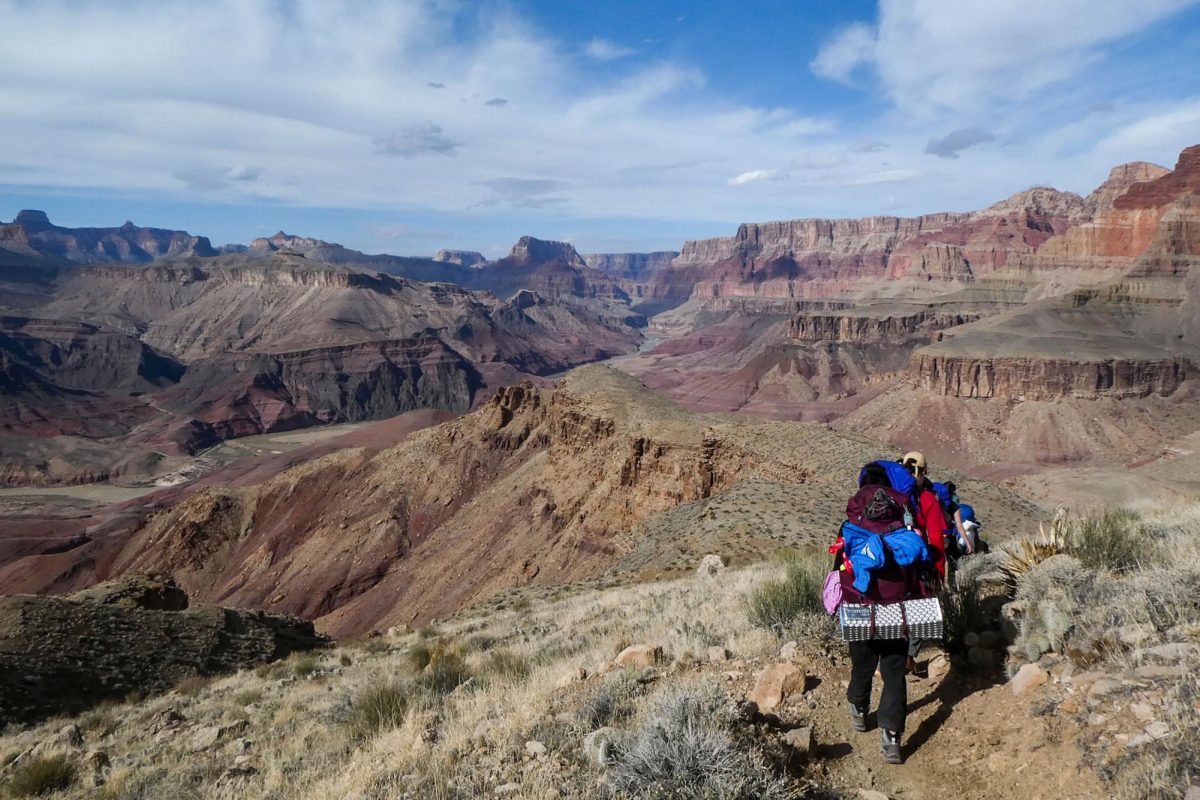Physics professor William Briscoe took a chance this semester.
He abandoned his lecture-style teaching method for his 38-student introductory physics course, opting to let students learn through exercise.
Now, if Briscoe talks at the front of the recently renovated Monroe Hall studio classroom for longer than three minutes, his teaching assistant gives him a signal.
“Certainly, I was frightened of this,” Briscoe said. “Thirty-five years of teaching in one mode, and all of a sudden you find yourself not lecturing. You’re walking around from group to group trying to talk to them about how they’re approaching a problem, how physics is involved.”
Through small group discussions and hands-on activities, Briscoe has propelled the average grades on his first test 10 percent higher than those in his lecture courses.
Following a push nationally and at GW to engage students in active learning, professors who teach courses in science, technology, engineering and mathematics – STEM courses – are rethinking their tactics, especially as the much-anticipated Science and Engineering Hall takes shape. The $275-million structure will not include any lecture-style classrooms, but will instead feature studio labs that cluster students in round tables instead of long benches.
The STEM-Education Group, a small association of faculty that formed this year as an offshoot of the University-wide Teaching and Learning Collaborative, is advocating for professors like Briscoe to spend less time repeating textbook material at the front of the class. It is also trying to prove that active learning methods, mostly used by science and engineering courses, will work across multiple departments and disciplines.
“For a lot of people, I think it’s very difficult to even contemplate changing. I think a lot of faculty are interested in changing, but they just don’t know how to do it,” biology professor and R.L. Weintraub endowed chair Robert Donaldson said.
To help professors adjust to new teaching methods, the University is providing financial and functional support for the STEM-Education Group’s series of workshops and seminars, the latest of which featured Robin Wright, associate dean of the department of genetics, cell biology and development at the University of Minnesota.
At the event Friday, which attracted about 50 attendees, the advocate for lecture-free biology courses stressed that professors’ enthusiasm toward encouraging group discussion would make the difference in effectively teaching science, technology, engineering and mathematics courses.
“I think that there’s a big movement right now across the nation, in fact across the world, to make science more accessible to more students,” Wright said. “We all are realizing that a lot of the problems that the world faces have potentially scientific solutions.”
The Center on Education and the Workforce at Georgetown University released a study last month highlighting concern that science, technology, engineering and mathematics professionals will only make up 5 percent of all workers in the U.S. economy by 2018.
Computer science professor Rahul Simha, one of four faculty members who organized the STEM-Education Group, said the University is poised to take the leap into active learning with this semester’s addition of more studio labs in Tompkins and Monroe halls.
“Hardly a day goes by when you don’t read about the concern about the number of STEM graduates and the quality,” Simha said. “I think this University in some way or the other has to face this issue, so one way we thought we could contribute to this discussion was to organize this seminar series.”
Studio labs, which foster active learning, were made popular by North Carolina State University a decade ago. The two new classrooms provide a preview for the studio labs that will have a large presence in the Science and Engineering Hall when it opens in 2015, Simha said.
Introductory science classes for non-science majors are of special concern for science, technology, engineering and mathematics professors at GW. Physics department chair Allena Opper said students who take these classes as graduation requirements tend to write them off.
“In a lecture classroom, they can sit in the back. But in a studio classroom, they have to be involved,” Opper said.
After a decade of informally pushing for more active learning at the University, assistant professor of biology Hartmut Doebel said he has seen progress since the hiring of Vice Provost for Teaching and Learning Stephen Ehrmann last summer.
“For the first time, I feel like the University is behind that full-throttle,” Doebel, who also helped organize the STEM-Education Group, said.







